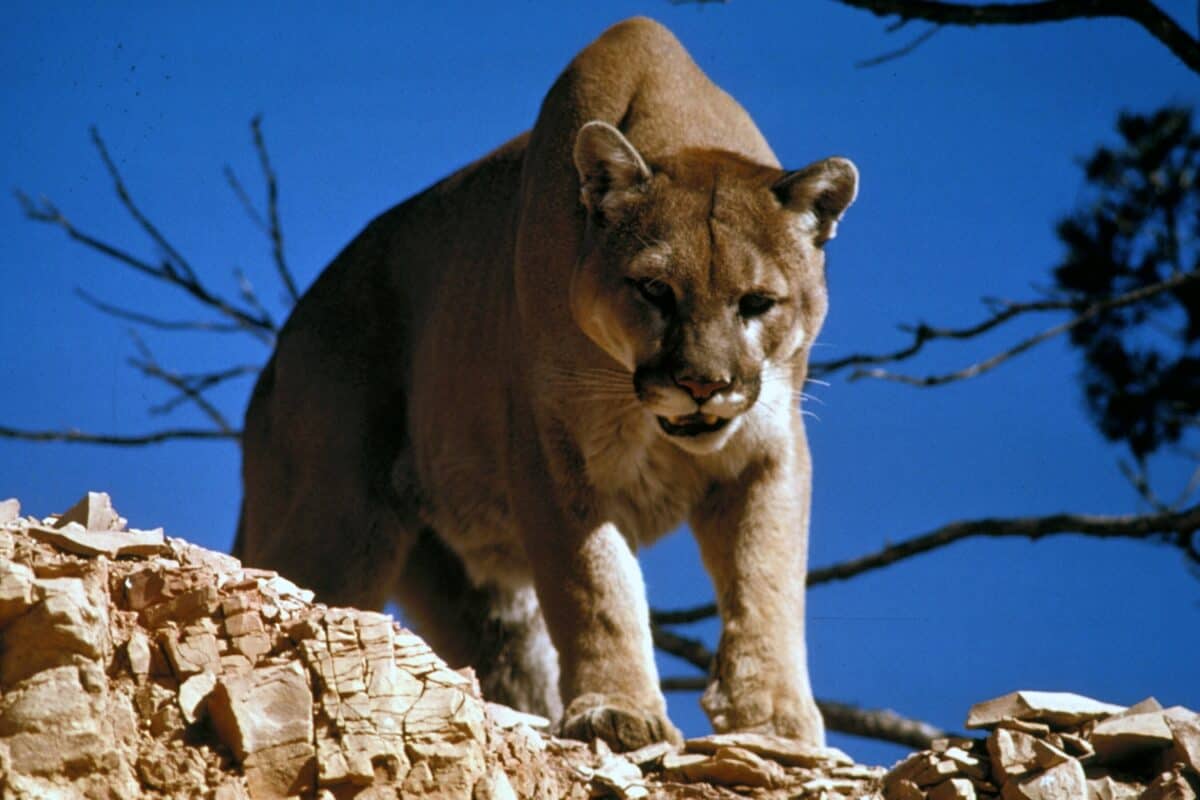North America is home to an astonishing variety of wildlife, many of which have evolved remarkable speed as a survival mechanism. From soaring birds to sprinting mammals, the continent hosts some of the fastest creatures on Earth. Whether escaping predators or hunting prey, these animals showcase nature’s incredible engineering. This article explores the 20 fastest animals in North America, highlighting their top speeds, unique adaptations, and the evolutionary advantages their velocity provides.
Peregrine Falcon The Undisputed Speed Champion

The peregrine falcon (Falco peregrinus) holds the title of not only North America’s fastest animal but the fastest creature on Earth. During its hunting dive, called a stoop, this remarkable bird can reach speeds of up to 240 mph (386 km/h). This incredible velocity allows it to strike prey—typically other birds—with such force that it can kill them instantly. The peregrine’s body is perfectly adapted for these high-speed dives, with special bony tubercles in its nostrils that control airflow and prevent damage to its respiratory system.
Found across North America, these falcons have made an impressive comeback after populations crashed due to DDT poisoning in the mid-20th century. They’ve even adapted to urban environments, nesting on skyscrapers and bridges where they hunt pigeons and other city birds. Their recovery represents one of the great conservation success stories in American wildlife history, demonstrating both their adaptability and the effectiveness of dedicated conservation efforts.
Golden Eagle Powerful High-Speed Hunter

The golden eagle (Aquila chrysaetos) is among North America’s most impressive aerial predators, capable of reaching speeds of up to 200 mph (320 km/h) during hunting dives. With a wingspan that can exceed 7 feet (2.1 meters), these majestic birds combine size with remarkable speed. Unlike many birds of prey that primarily target small mammals, golden eagles are powerful enough to take down animals as large as deer fawns and coyote pups, though they typically hunt rabbits, hares, and ground squirrels.
Golden eagles are found primarily in western North America, from Alaska to Mexico, favoring mountainous regions and open country. Their exceptional vision allows them to spot prey from over a mile away, after which they employ their remarkable speed in pursuit. Conservation concerns include habitat loss, wind turbine collisions, and lead poisoning from consuming animals shot with lead ammunition. Despite these challenges, their populations remain relatively stable across much of their range.
Pronghorn Antelope North America’s Land Speed Record Holder
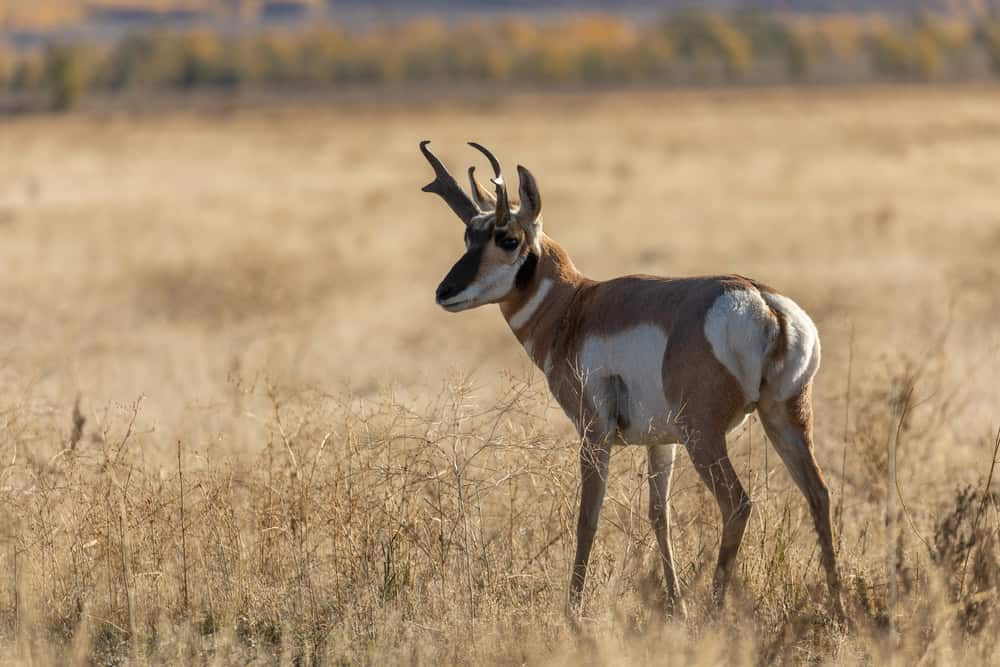
Often mistakenly called an antelope (though not closely related to true antelopes), the pronghorn (Antilocapra americana) is the fastest land animal in North America and the second fastest land animal globally after the cheetah. Capable of sustained speeds of 55 mph (88 km/h) and bursts of up to 60 mph (96 km/h), these remarkable mammals can maintain their high velocity over extended distances—an adaptation that puzzled biologists until relatively recently. The mystery lies in the fact that no current North American predator can match the pronghorn’s speed.
The evolutionary explanation appears to be that pronghorns evolved their exceptional speed to escape now-extinct American cheetahs that hunted them during the Pleistocene epoch. Today’s pronghorns essentially possess an evolutionary overengineering—speed beyond what’s necessary for current predators. Their specialized respiratory and cardiovascular systems allow for exceptional oxygen processing, while their lightweight bone structure and specialized hooves contribute to their remarkable velocity. Found primarily in western grasslands and deserts, pronghorn populations have recovered from near-extinction in the early 20th century to around 700,000 individuals today.
Coyote The Adaptable Speedster

The coyote (Canis latrans) has become one of North America’s most successful predators, partly due to its impressive speed of up to 43 mph (69 km/h). This velocity allows coyotes to effectively hunt small mammals like rabbits and rodents, which comprise the bulk of their diet. Unlike many animals that have suffered population declines with human expansion, coyotes have actually increased their range throughout North America, adapting remarkably well to human-altered landscapes from wilderness to urban centers.
These canids combine their speed with exceptional intelligence and adaptability. They can switch hunting strategies based on available prey and conditions, hunting alone for small animals or in coordinated packs for larger prey. Their success has sometimes put them in conflict with humans, particularly when they prey on livestock or pets. However, their ecological role in controlling rodent populations often outweighs these conflicts, making them important components of North American ecosystems despite their sometimes controversial reputation.
White-tailed Jackrabbit Built for Evasion
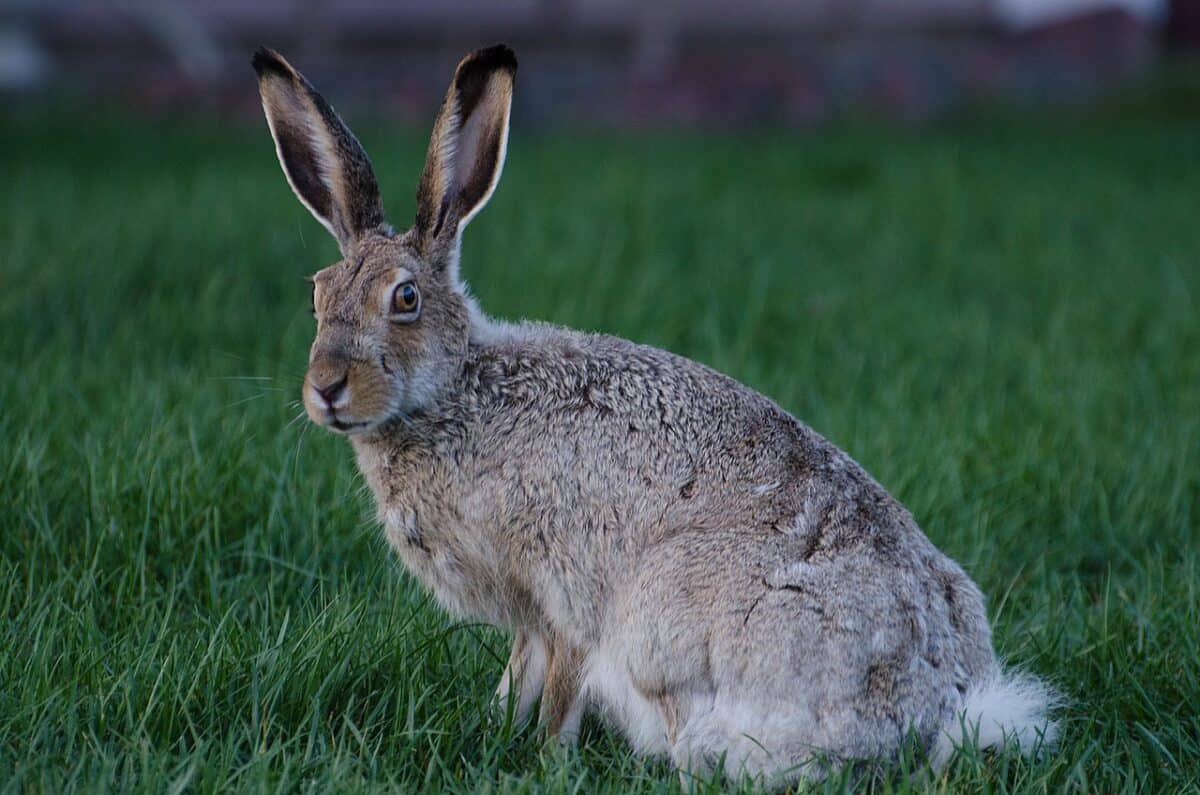
The white-tailed jackrabbit (Lepus townsendii) can reach speeds of up to 40 mph (64 km/h), making it one of North America’s fastest mammals and giving it a crucial advantage in escaping predators. Despite its name, this “jackrabbit” is actually a hare, not a rabbit—born fully furred with eyes open and capable of running shortly after birth. Found across the northern Great Plains and parts of the western United States and Canada, these hares have evolved distinctive strategies to complement their speed.
White-tailed jackrabbits employ a zigzag running pattern when fleeing predators, making them even more difficult to catch despite their relatively large size (up to 10 pounds/4.5 kg). They’ve also developed seasonal camouflage, with brown summer coats that turn white in winter in northern populations—though this adaptation has become problematic in areas experiencing reduced snowfall due to climate change. Their population has declined in parts of their range due to habitat conversion to agriculture, but they remain common in suitable grassland habitats.
Gyrfalcon Arctic Speed Specialist
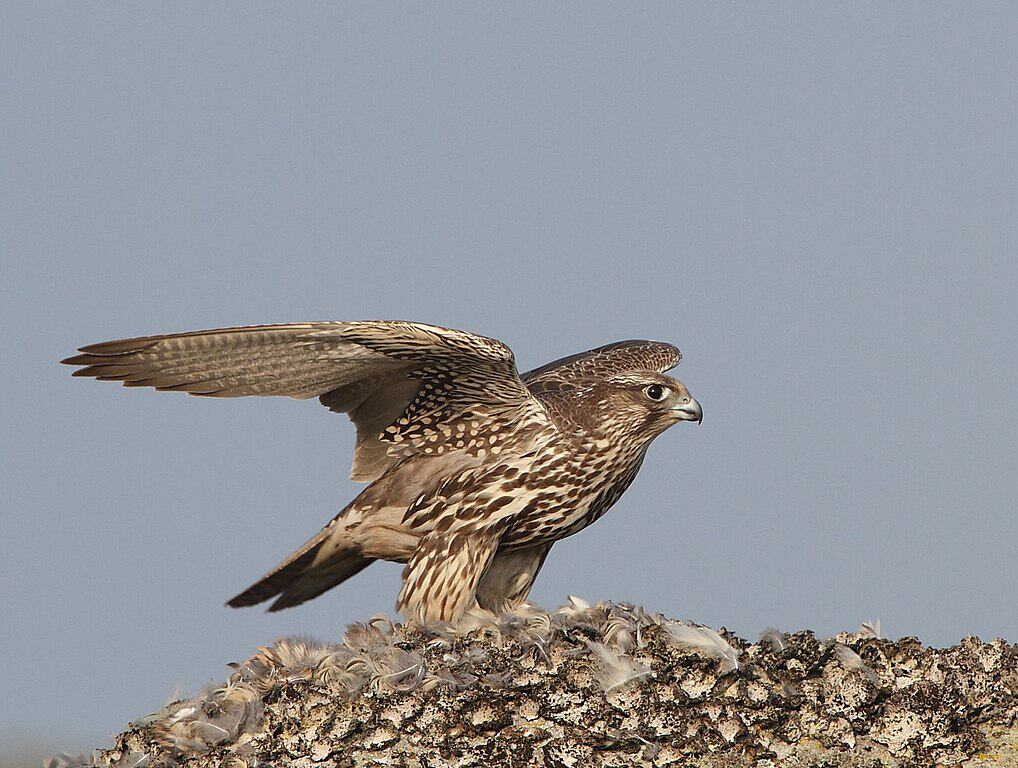
The gyrfalcon (Falco rusticolus) is the largest falcon species and one of North America’s fastest birds, capable of horizontal flying speeds of up to 70 mph (113 km/h) and diving speeds approaching 130 mph (209 km/h). Native to Arctic and subarctic regions of North America, these powerful raptors are perfectly adapted to the harsh northern environment. Their larger size compared to other falcons helps them retain heat in cold climates, while their speed allows them to effectively hunt ptarmigan, waterfowl, and even other birds in flight.
Gyrfalcons display remarkable color variation, ranging from nearly pure white in the northernmost populations to dark gray or almost black in more southern areas. This variation may provide camouflage advantages in different environments. Unlike many North American raptors that migrate seasonally, gyrfalcons often remain in their northern territories year-round, though some individuals—particularly younger birds—may move southward during winter months. Their remote habitat has helped protect them from many human impacts, though climate change poses increasing challenges to this Arctic specialist.
Brown Hare The Speedy European Immigrant
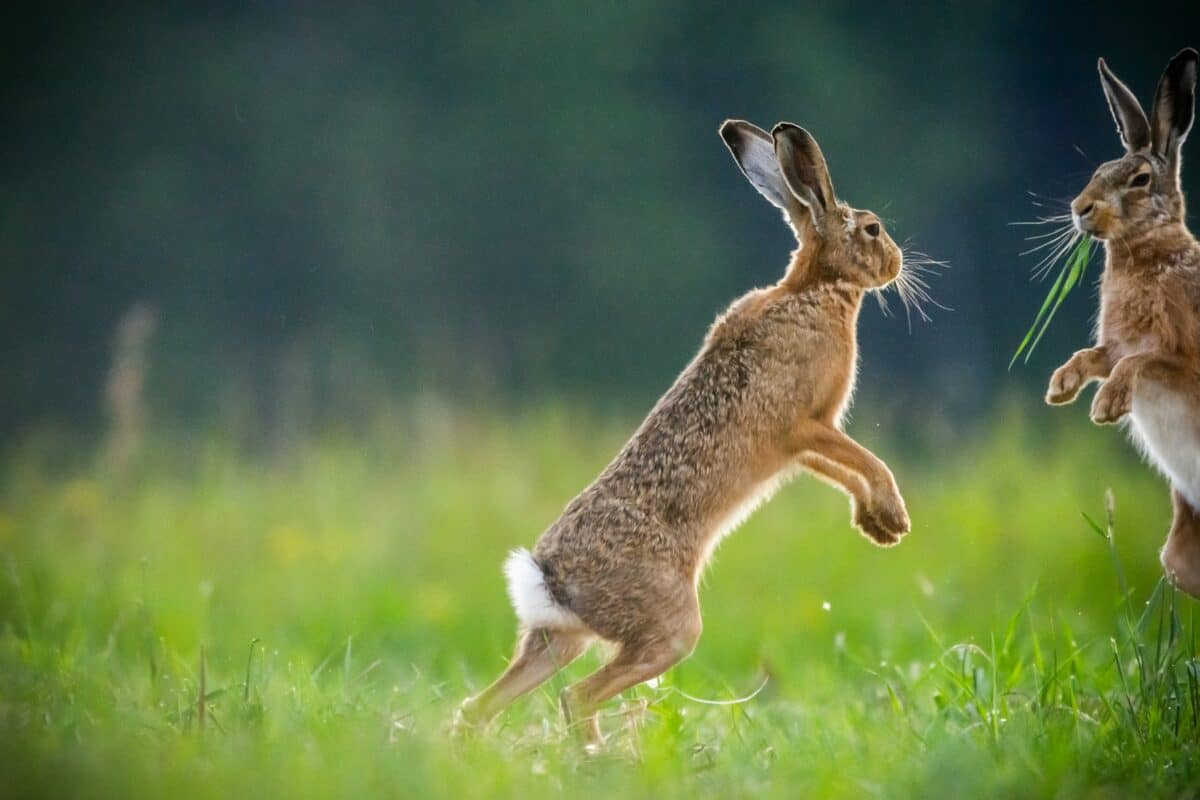
The European brown hare (Lepus europaeus), introduced to parts of North America in the late 19th century, can reach speeds of up to 35 mph (56 km/h). Though not native, these hares have established populations in parts of southern Canada and the northeastern United States. Their impressive speed serves as their primary defense against predators, allowing them to outrun most threats in their environment. Unlike rabbits, which seek safety in burrows, hares rely almost exclusively on their speed and agility to escape danger.
Brown hares prefer open agricultural landscapes with some cover for protection. They’re larger than cottontail rabbits but smaller than jackrabbits, weighing between 6-8 pounds (2.7-3.6 kg) on average. Their introduction has had mixed ecological impacts, competing with native rabbits and hares in some areas while providing additional prey for native predators. Unlike many introduced species that become invasive, brown hares have generally established sustainable populations without causing significant ecosystem disruption, though their presence represents another example of human-mediated species redistribution.
Gray Fox The Tree-Climbing Speedster
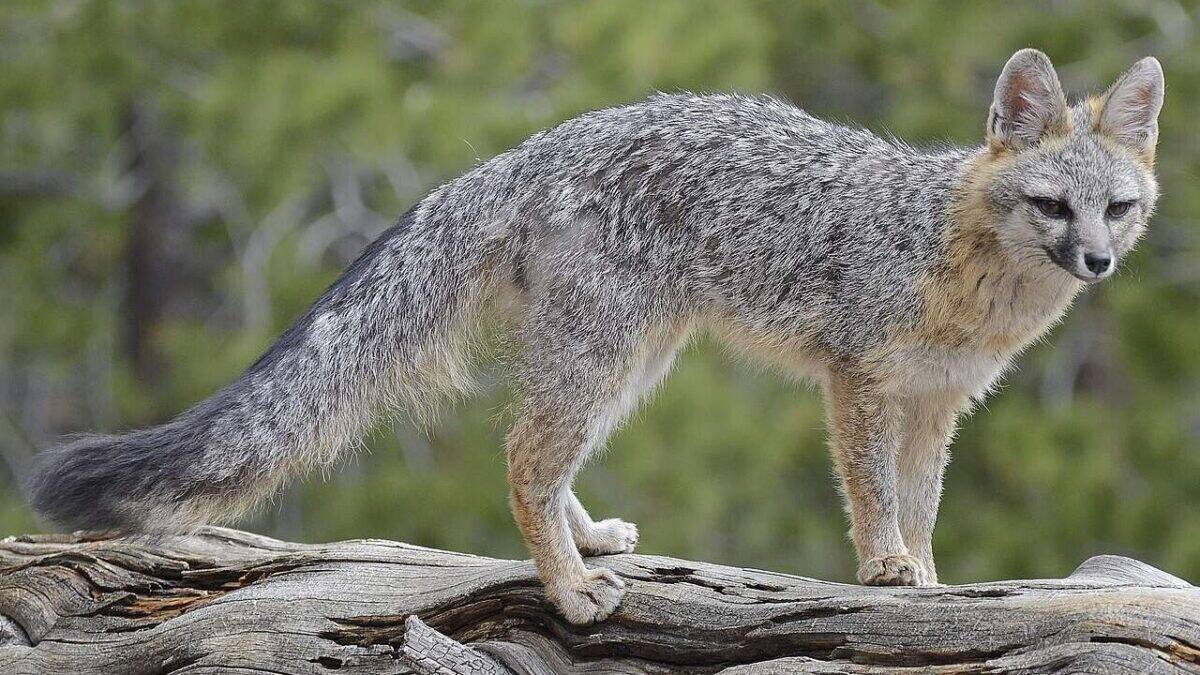
The gray fox (Urocyon cinereoargenteus) can reach speeds of up to 30 mph (48 km/h), making it one of North America’s faster predators. What makes this canid truly unique, however, is that it’s the only member of the dog family in North America that can climb trees—an ability that complements its speed with additional escape options and hunting opportunities. With a range extending from southern Canada to northern South America, gray foxes are among the most adaptable predators on the continent.
Unlike their red fox cousins, gray foxes prefer more wooded habitats where their climbing abilities provide advantages. Their diet is remarkably omnivorous, including small mammals, birds, insects, and a significant amount of plant material, especially fruits and nuts in autumn. This dietary flexibility, combined with their speed and climbing abilities, has helped gray fox populations remain stable despite human landscape alterations. Their cat-like claws, which are partially retractable, enable their tree-climbing prowess and distinguish them from other North American canids.
Elk Surprising Speed for Their Size
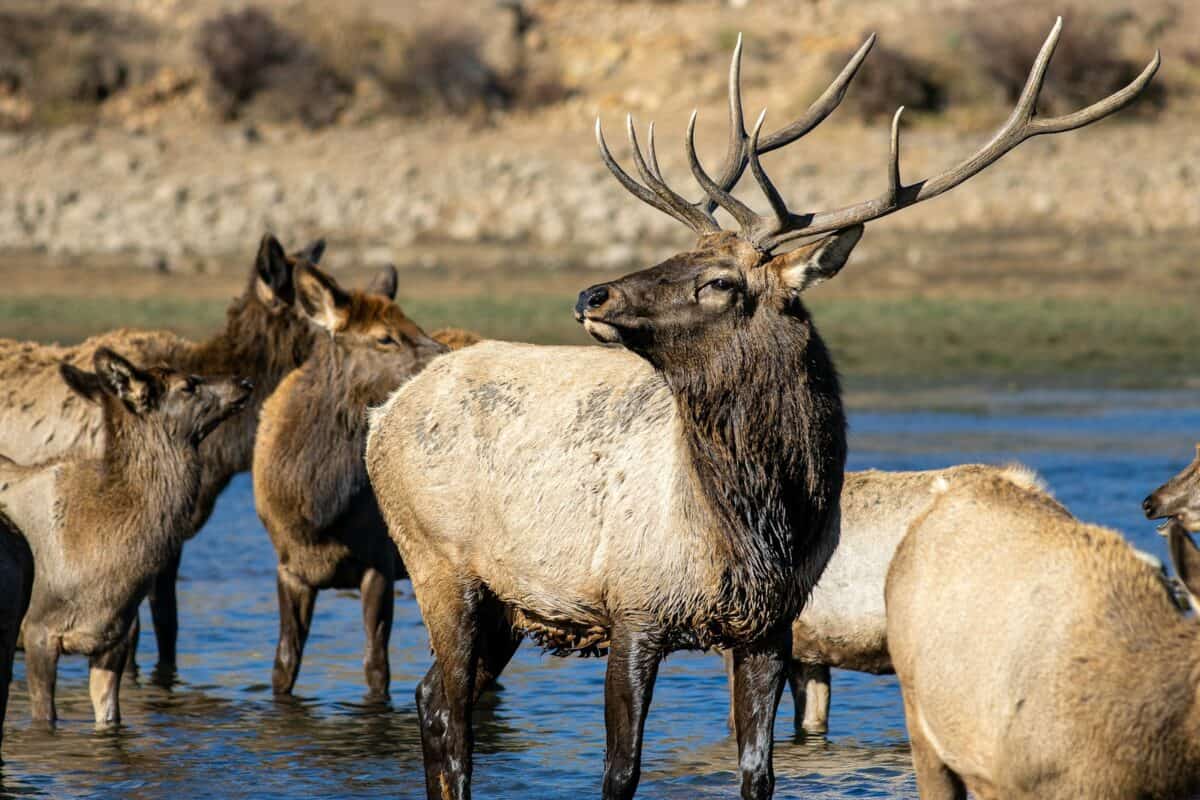
The North American elk (Cervus canadensis), also known as wapiti, can reach speeds of up to 45 mph (72 km/h)—an impressive feat for an animal that can weigh up to 700 pounds (317 kg). This combination of size and speed makes elk one of the most formidable herbivores on the continent. Their velocity serves primarily as a defense against predators like wolves and mountain lions, allowing even large bulls to escape danger despite their considerable bulk and elaborate antlers.
Elk once ranged across most of North America but are now primarily found in western regions, with some reintroduced populations in eastern states. They’re highly adaptable, occupying habitats from mountain forests to grasslands and even desert edges. Beyond their impressive speed, elk are known for their distinctive bugling calls during the fall rut, when bulls compete for mating opportunities. Their populations have recovered significantly from near-extinction in the early 20th century, though habitat fragmentation and disease transmission from domestic livestock continue to pose conservation challenges.
Red Fox The Versatile Velocity Expert
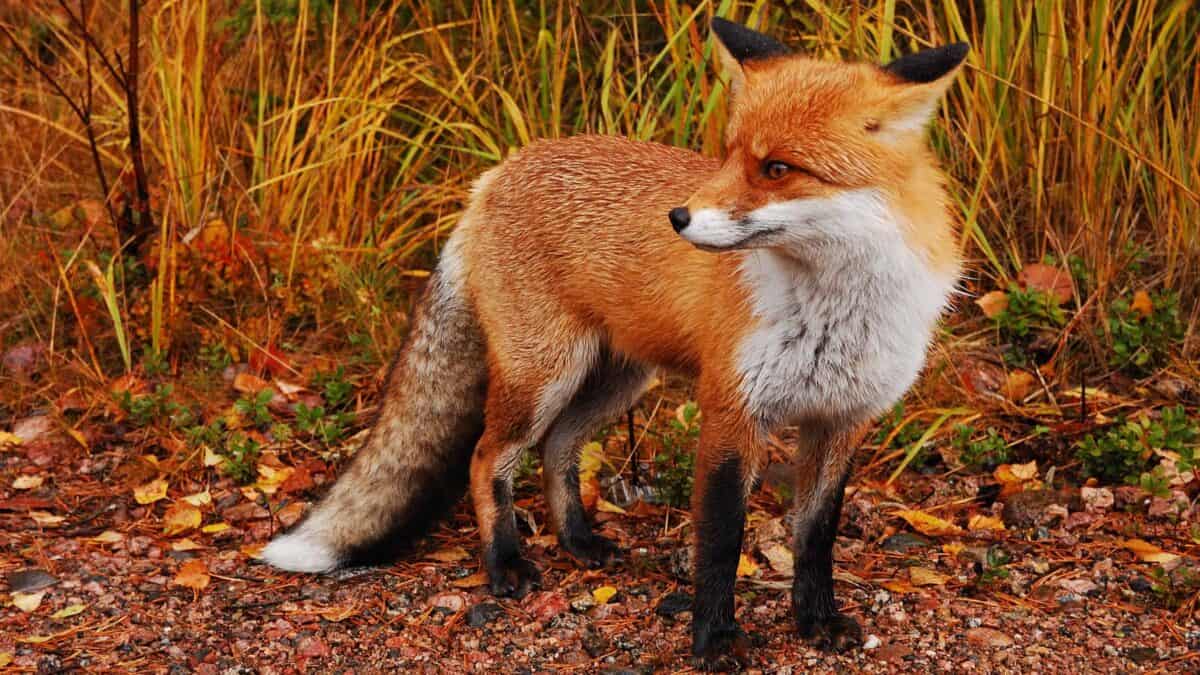
The red fox (Vulpes vulpes) can reach speeds of up to 31 mph (50 km/h), making it one of North America’s quicker predators. This speed, combined with remarkable intelligence and adaptability, has allowed red foxes to thrive across diverse environments from remote wilderness to urban centers. Unlike many predators that specialize in particular hunting techniques, red foxes employ their speed in multiple hunting strategies, from chasing down prey to pouncing from a stationary position.
Native to North America, Europe, and Asia, red foxes have the widest geographical range of any carnivore. They primarily hunt small mammals like mice, voles, and rabbits, though they readily adapt their diet to include birds, amphibians, and even fruits and vegetables when available. Their distinctive hunting technique—the “mousing leap,” where they precisely pounce on prey detected by sound under snow or vegetation—showcases the combination of acute senses and physical abilities that make them such successful predators. Despite centuries of persecution as both pest and game animal, red fox populations remain robust across most of their range.
Mule Deer Masters of the Bound
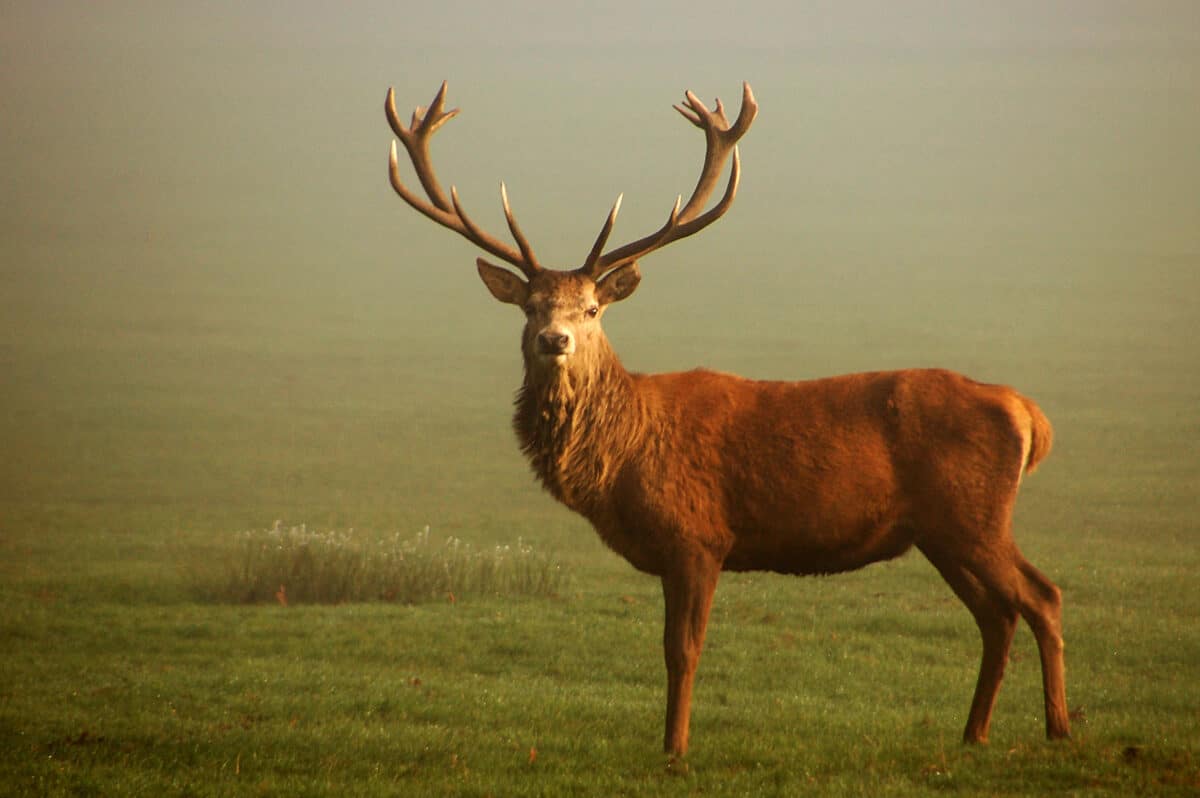
The mule deer (Odocoileus hemionus), named for their large mule-like ears, can reach speeds up to 35 mph (56 km/h), but what makes their movement truly remarkable is their distinctive bounding gait called “stotting.” When fleeing predators, mule deer leap with all four feet leaving the ground simultaneously, covering 15-20 feet (4.5-6 meters) per bound. This unusual locomotion is particularly effective in the rocky, uneven terrain of western North America where these deer primarily live.
Unlike the fluid running of white-tailed deer, the mule deer’s stiff-legged bounding allows them to change direction instantly mid-air and navigate difficult terrain without losing speed. This adaptation provides significant advantages when escaping predators like mountain lions or coyotes in mountainous or desert environments. Mule deer populations face challenges from habitat fragmentation, vehicle collisions, and disease, but they remain widespread across western North America from the Canadian Yukon to Mexico, demonstrating the effectiveness of their unique movement adaptations.
Mountain Lion The Stealthy Sprinter
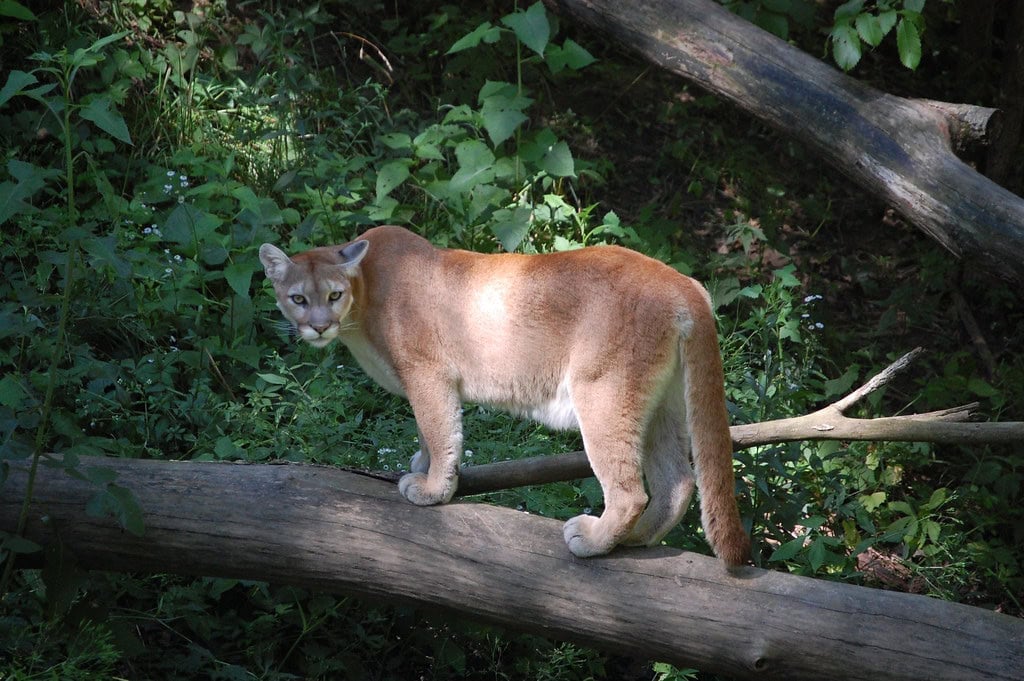
The mountain lion (Puma concolor), also known as cougar or puma, can reach burst speeds of up to 50 mph (80 km/h), making it one of North America’s fastest predators. Unlike pack hunters like wolves, mountain lions are ambush predators that rely on explosive acceleration rather than sustained pursuit. They typically sprint short distances after stalking prey from concealment, using their remarkable speed to close the distance before prey can react. This hunting strategy is particularly effective for their preferred prey, deer, though they’re capable of taking down animals much larger than themselves.
With the largest range of any land mammal in the Western Hemisphere—from the Canadian Yukon to the southern Andes—mountain lions demonstrate remarkable adaptability across diverse habitats. Their cryptic coloration and secretive nature make them rarely seen despite occupying territories relatively close to human development. After decades of persecution that eliminated them from much of eastern North America, mountain lions have been making a gradual comeback in some regions. Their combination of stealth, power, and speed makes them the quintessential American big cat and one of the continent’s most effective predators.
Ferruginous Hawk The Swift Prairie Hunter
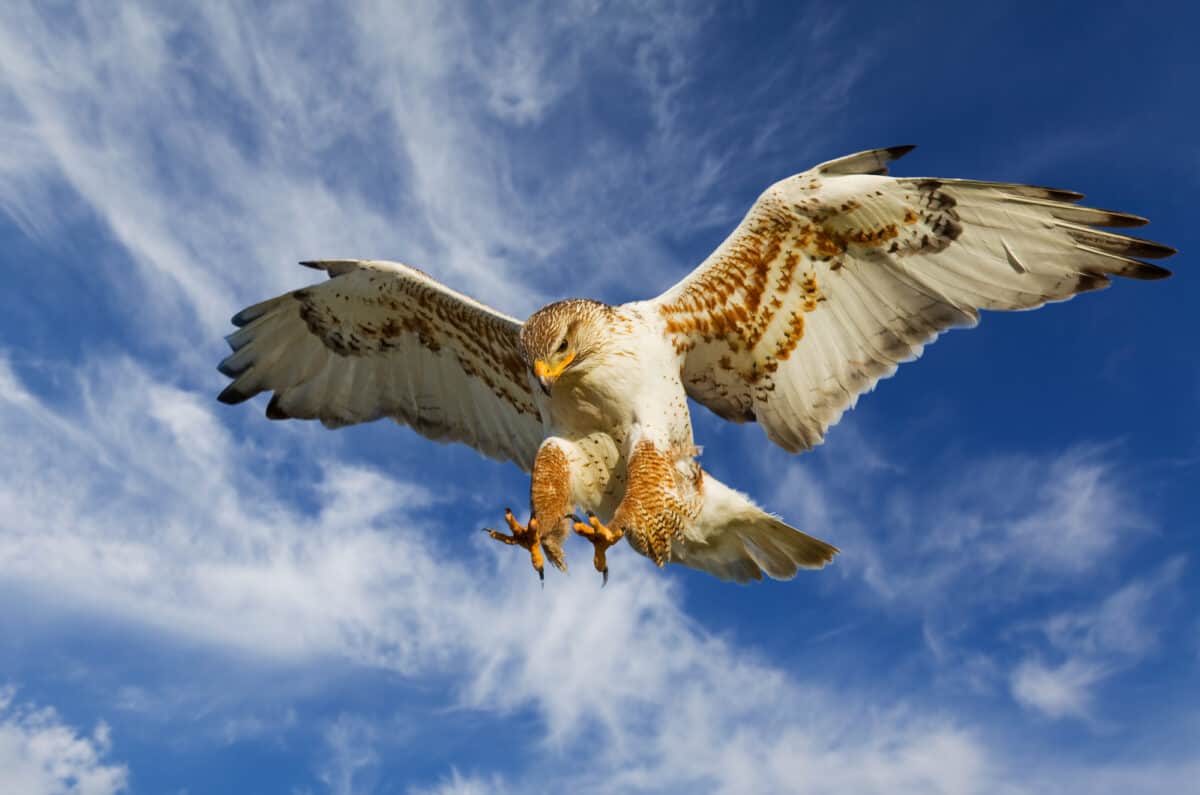
The ferruginous hawk (Buteo regalis), North America’s largest hawk species, can reach diving speeds of up to 70 mph (113 km/h) when pursuing prey. These impressive raptors are specialists of open country, particularly the grasslands and shrub-steppe of western North America. Their name derives from their rusty (ferruginous) coloration, though they also occur in a darker morph. Unlike the falcon family, which relies primarily on speed, these hawks combine considerable velocity with powerful talons designed for capturing and killing relatively large prey like jackrabbits and ground squirrels.
Ferruginous hawks employ various hunting strategies, including soaring high before diving on prey, hunting from perches, or even running along the ground to capture prey—a behavior unusual among hawks. Their population declined significantly during the 20th century due to habitat loss as native grasslands were converted to agriculture, but conservation efforts have stabilized numbers in many regions. As top predators in grassland ecosystems, their presence indicates healthy prairie habitat, making them important indicator species for conservation efforts in North America’s threatened grassland environments.
Black-tailed Jackrabbit Desert Speed Demon
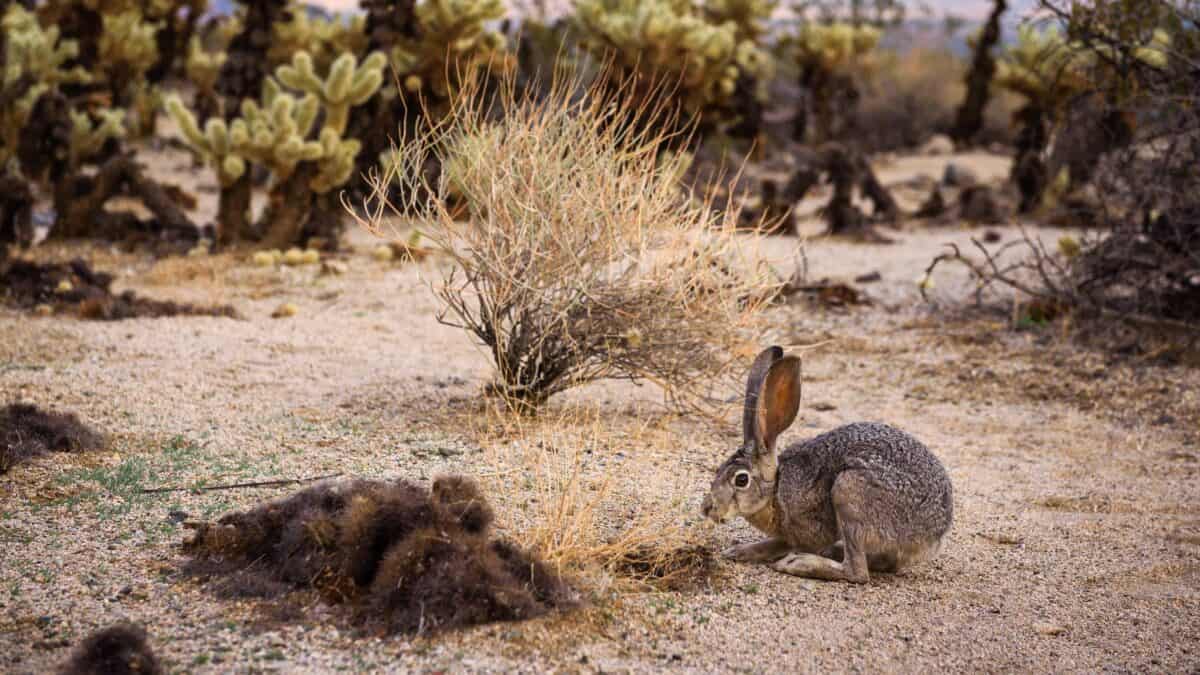
The black-tailed jackrabbit (Lepus californicus) can reach speeds of up to 35 mph (56 km/h) and maintain velocities of 30 mph (48 km/h) for extended periods. Despite its name, this “jackrabbit” is actually a hare, born fully developed and ready to run shortly after birth. As a primary prey species for numerous predators including coyotes, bobcats, golden eagles, and great horned owls, their speed is their most important survival adaptation. Found across the western United States and Mexico, these hares are perfectly adapted to arid environments.
Black-tailed jackrabbits have developed several physiological adaptations to complement their speed, including oversized ears that serve both for keen hearing and thermoregulation in hot desert environments. They typically avoid predators by freezing in place until the last moment, then exploding into their characteristic high-speed run with erratic direction changes. Unlike many North American mammals that have declined with human expansion, black-tailed jackrabbits have sometimes benefited from certain landscape changes, particularly where predator reduction and agricultural practices have created favorable conditions.
Conclusion:
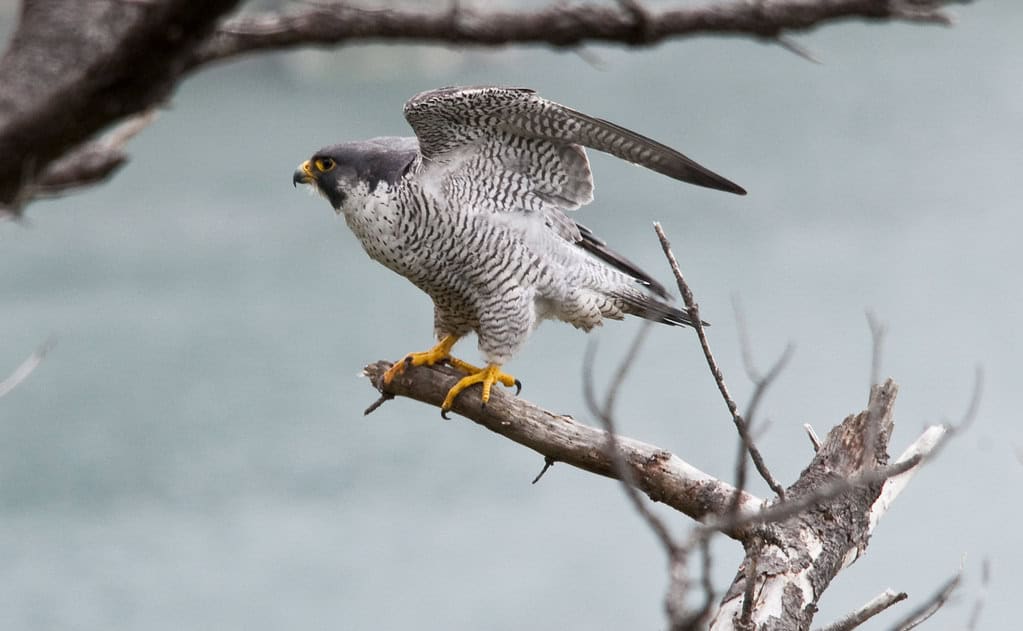
From the skies to the plains and even beneath the waves, North America is home to an astonishing array of speedsters that showcase the raw power and precision of evolution. These animals—whether sprinting across desert terrain like the pronghorn, diving from the clouds like the peregrine falcon, or darting through water like the sailfish—demonstrate that speed is often a matter of survival, hunting, or escape.
Each species on this list reminds us that nature’s design can be both beautiful and functional, honed over millennia to achieve breathtaking performance. Whether you’re a wildlife enthusiast or just curious about the extremes of the animal kingdom, these swift creatures are bound to leave you with a deeper appreciation for the natural world—and maybe even a little awe.
- 13 Most Aggressive Mammals in the Wild - August 24, 2025
- 10 Behaviors That Keep Eagles Healthy And 3 That Shorten Lifespan - August 24, 2025
- 13 Wildest Animal Migration Journeys - August 24, 2025

